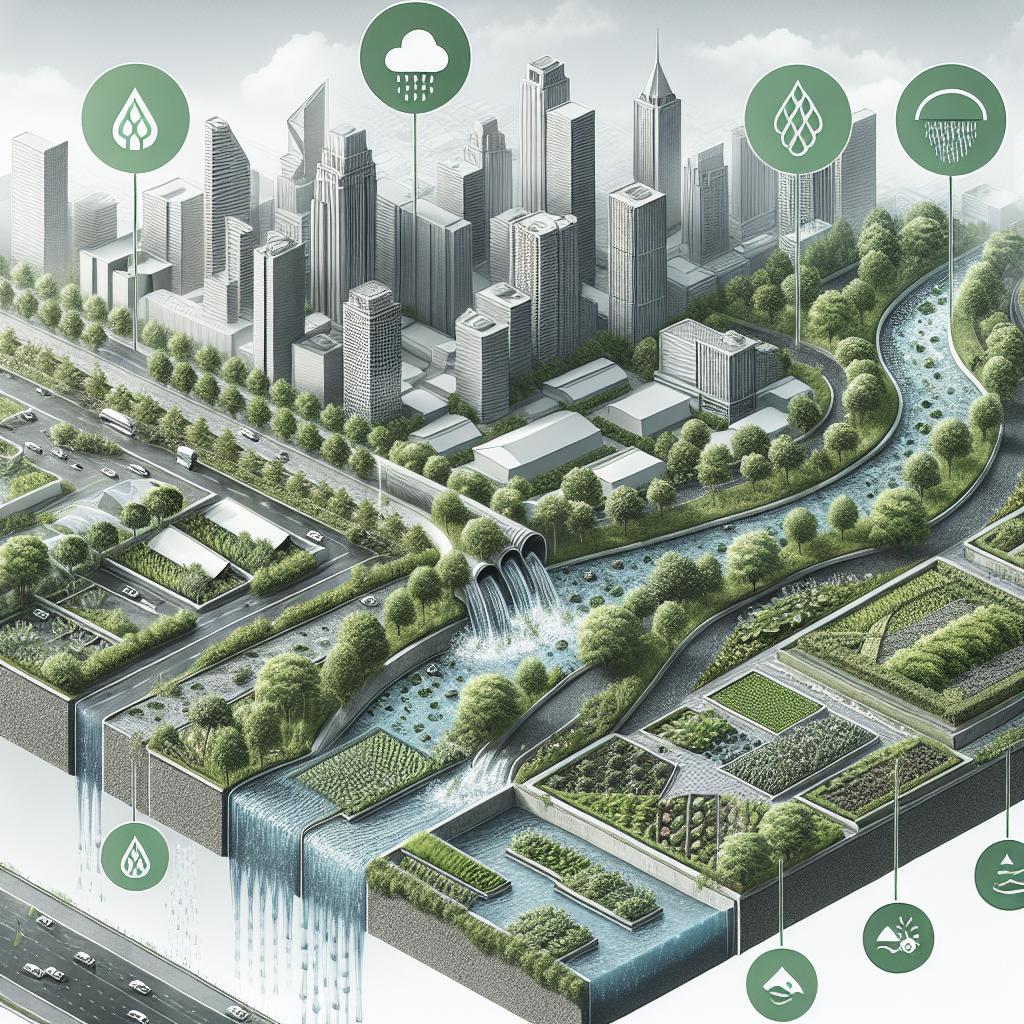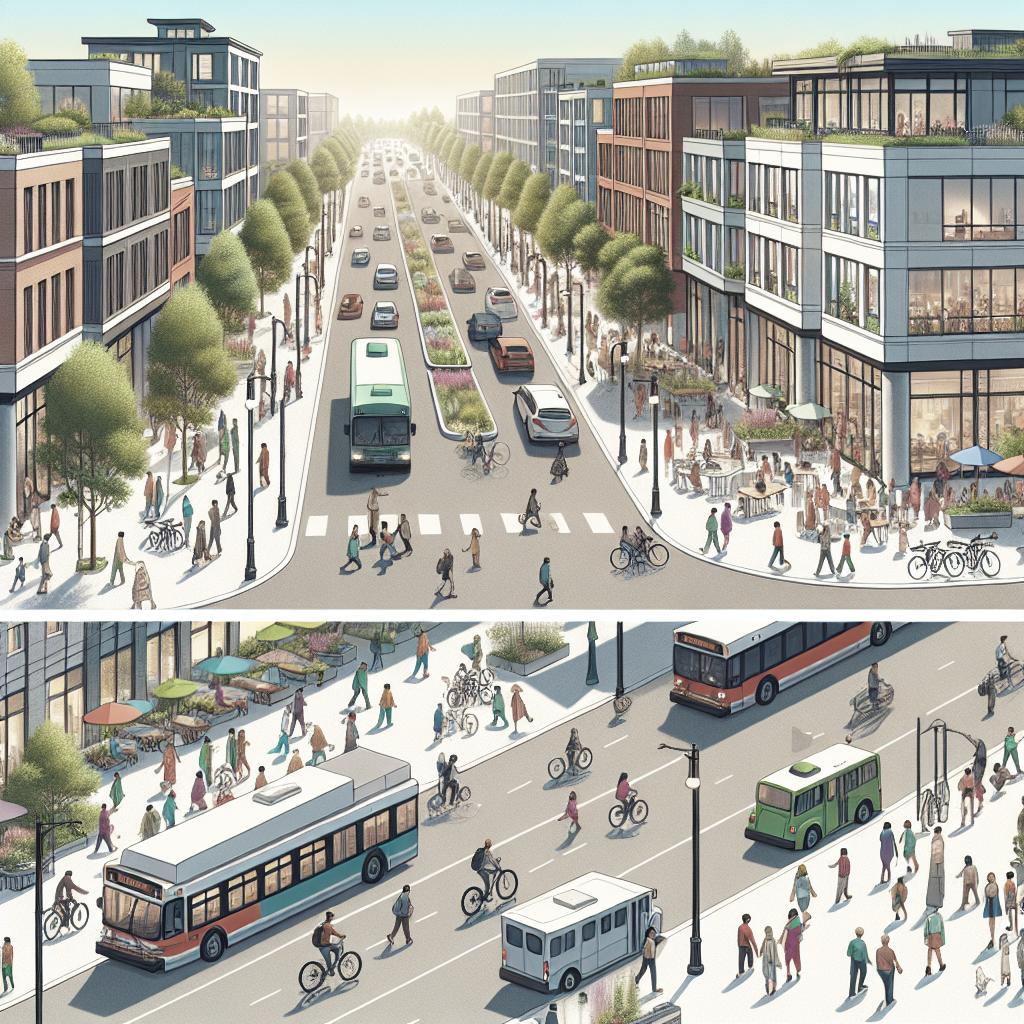<>
“`
Stormwater management is crucial for urban areas to mitigate flooding, control runoff, and improve water quality. By implementing effective Best Management Practices (BMPs) and Sustainable Stormwater Control Measures (SCMs), cities can significantly reduce their impact on the environment. This blog post delves into various types of BMPs, discusses guidelines tailored by land use, and emphasizes the importance of green infrastructure and ongoing maintenance. These strategies are essential for building resilient and sustainable urban environments.
Types of BMPs
Best Management Practices (BMPs) for stormwater management encompass a variety of methods designed to control the volume and improve the quality of stormwater runoff. These practices can be broadly categorized into structural and non-structural BMPs.
Structural BMPs include physical constructions such as retention ponds, constructed wetlands, and permeable pavements. Retention ponds, for example, are engineered to capture and retain stormwater, allowing sediments and pollutants to settle before the water is slowly released or infiltrated into the ground. Constructed wetlands mimic natural wetlands by providing habitat for plants and organisms that help filter and cleanse stormwater. Permeable pavements, on the other hand, allow water to percolate through the surface, reducing runoff and promoting groundwater recharge.
Non-structural BMPs focus on preventive measures and policy initiatives, including public education campaigns, restrictions on the use of certain fertilizers and pesticides, and the development of land-use regulations. Public education is pivotal in making residents aware of the impact of their activities on stormwater quality and encouraging practices such as proper disposal of hazardous wastes. Land-use regulations can direct urban development away from sensitive aquatic environments and promote the preservation of green spaces that naturally manage stormwater.
By Land Use
Residential Areas
In residential areas, stormwater management effectiveness can be significantly improved by encouraging homeowners to adopt on-site BMPs. Rain gardens, rain barrels, and green roofs are excellent examples of residential BMPs. Rain gardens, which are shallow, vegetated basins, can capture and infiltrate stormwater from roofs and driveways, reducing runoff and filtering pollutants. Rain barrels collect rooftop runoff, which can then be reused for gardening or other non-potable purposes, thus reducing the volume of stormwater entering the sewers.
Green roofs, covered with vegetation, not only manage stormwater but also help insulate buildings and reduce urban heat island effects. They absorb rainfall, thereby delaying runoff and reducing the burden on urban drainage systems. By integrating these BMPs into residential properties, homeowners can contribute to overall urban stormwater management efforts while enhancing their landscaping and home efficiency.
Commercial Areas
Commercial and industrial zones often feature extensive impervious surfaces which generate significant runoff; therefore, robust stormwater management strategies are essential. BMPs in these areas might include engineered solutions such as underground detention systems, bio-retention cells, and oil-water separators. Underground detention systems temporarily store large volumes of stormwater runoff and release it gradually, minimizing flooding and erosion downstream.
Bio-retention cells, or rain gardens adapted for urban settings, are designed to capture and treat stormwater by filtering it through vegetation and soil layers before it infiltrates or is conveyed to storm systems. Oil-water separators, commonly used in industrial areas, are critical for treating runoff that contains oil and grease pollutants from vehicles and heavy machinery. Implementing these practices helps maintain water quality and prevent environmental degradation in urban watersheds.
Public Spaces
Public spaces like parks, streetscapes, and municipal facilities offer an excellent opportunity to lead by example in stormwater management. Permeable pavements can be installed in parking lots and walkways to facilitate rainwater infiltration. Swales, vegetated ditches designed to manage and filter runoff, are often used along roadsides and medians. These naturally treat stormwater by slowing its flow and allowing sediments and pollutants to settle.
Municipalities can also invest in large-scale green infrastructure projects, such as urban wetlands or green roofs on public buildings. These additions not only manage stormwater effectively but also enhance urban aesthetics and biodiversity. By integrating stormwater management features into public spaces, cities can demonstrate sustainable practices while improving community resilience to flooding and water pollution.
BMP/SCM Maintenance
Maintenance is a critical component of successful BMP and SCM implementation. Regular inspections and upkeep ensure that stormwater management practices continue to function as intended over time. Without proper maintenance, BMPs can become ineffective, leading to increased flooding and water quality issues.
Maintenance activities vary depending on the type of BMP. For instance, retention ponds require periodic dredging to remove accumulated sediments and debris, while permeable pavements need routine cleaning to prevent clogging. Vegetated BMPs such as rain gardens and green roofs need ongoing care, including weeding, mulching, and replacing dead plants. Implementing a structured maintenance plan is crucial for sustaining the performance and longevity of stormwater management systems.
Importance of Scheduled Maintenance
Scheduled maintenance is vital to avoid unplanned repairs and maximize the lifespan of BMPs. A well-structured maintenance schedule ensures that all components of the stormwater system are inspected and serviced regularly. This proactive approach helps identify potential issues before they escalate into major problems.
For example, regular sediment removal from retention ponds can prevent overflow and maintain water quality. Likewise, routinely inspecting permeable pavements for signs of clogging can prolong their effectiveness in managing stormwater. By adhering to a maintenance schedule, municipalities and property owners can ensure the sustainable performance of their stormwater management systems.
Green Infrastructure
Benefits of Green Infrastructure
Green infrastructure refers to the use of natural processes and green spaces to manage stormwater. This approach offers numerous environmental, economic, and social benefits. Unlike traditional gray infrastructure, which relies on engineered solutions like pipes and sewers, green infrastructure utilizes vegetation, soil, and natural systems to capture, filter, and infiltrate stormwater.
One of the primary benefits of green infrastructure is its ability to enhance water quality by filtering pollutants through natural processes. Additionally, green infrastructure can reduce urban heat island effects, improve air quality, and create recreational spaces for communities. Economically, green infrastructure can be more cost-effective than conventional stormwater systems, reducing costs associated with water treatment, energy use, and flood damage repairs.
Implementation Strategies
Successful green infrastructure implementation requires a collaborative approach involving urban planners, landscape architects, engineers, and community members. To begin with, cities can identify suitable locations for green infrastructure projects, such as underutilized urban areas that can be transformed into parks or community gardens.
Incorporating green infrastructure into new developments and retrofitting existing infrastructure are both viable strategies. For new developments, planners can mandate the inclusion of green roofs, permeable pavements, and bio-retention areas through zoning regulations and building codes. Retrofitting existing urban areas may involve converting vacant lots into rain gardens or replacing traditional pavements with permeable alternatives. Community participation and education are also critical, as residents play a significant role in maintaining and supporting green infrastructure initiatives.
Next Steps
| Section | Summary |
|---|---|
| Types of BMPs | – Structural BMPs: Retention ponds, constructed wetlands, permeable pavements. – Non-structural BMPs: Public education, policy initiatives, land-use regulations. |
| By Land Use | – Residential Areas: Rain gardens, rain barrels, green roofs. – Commercial Areas: Underground detention systems, bio-retention cells, oil-water separators. – Public Spaces: Permeable pavements, swales, urban wetlands. |
| BMP/SCM Maintenance | – Importance of regular inspections and upkeep. – Variables in maintenance activities: Sediment removal, cleaning permeable pavements, vegetation care. – Scheduled maintenance to maximize BMP lifespan. |
| Green Infrastructure | – Benefits: Enhanced water quality, reduced urban heat island effects, cost-effectiveness. – Implementation: Collaborative approach, identifying suitable locations, new developments, retrofitting existing infrastructure, community participation. |
“`


